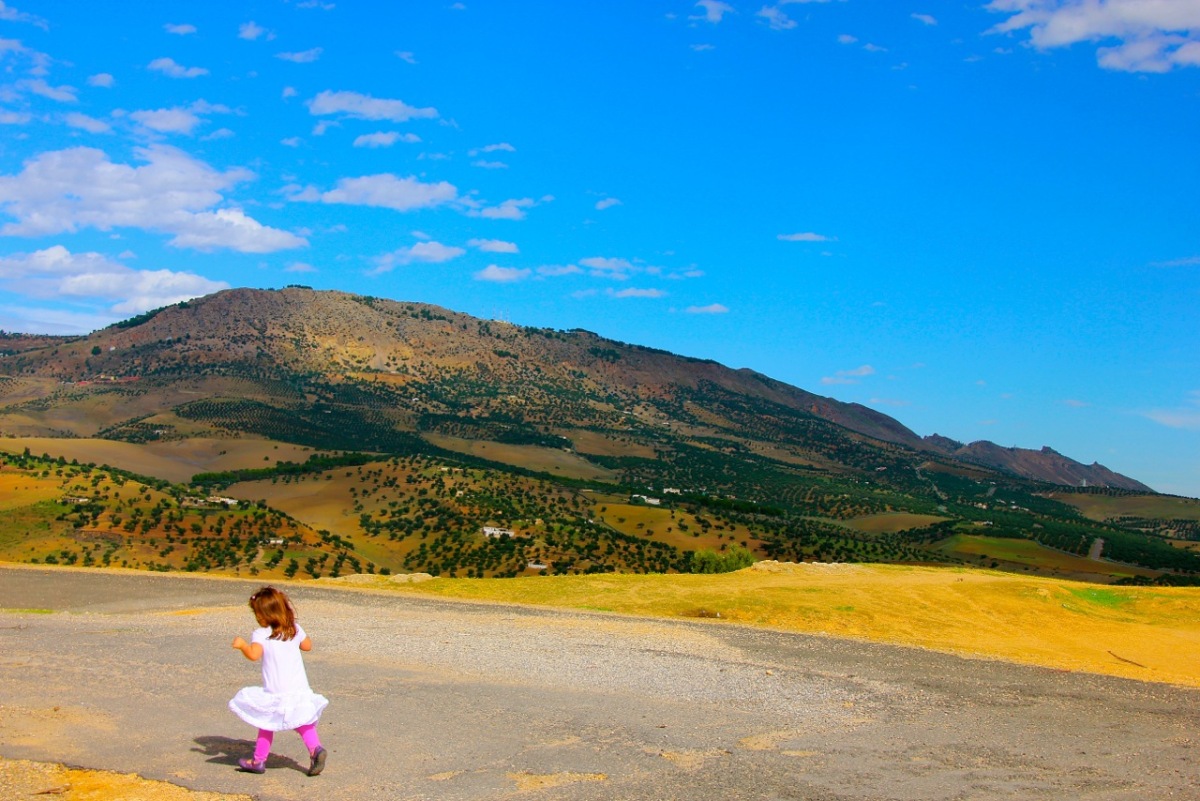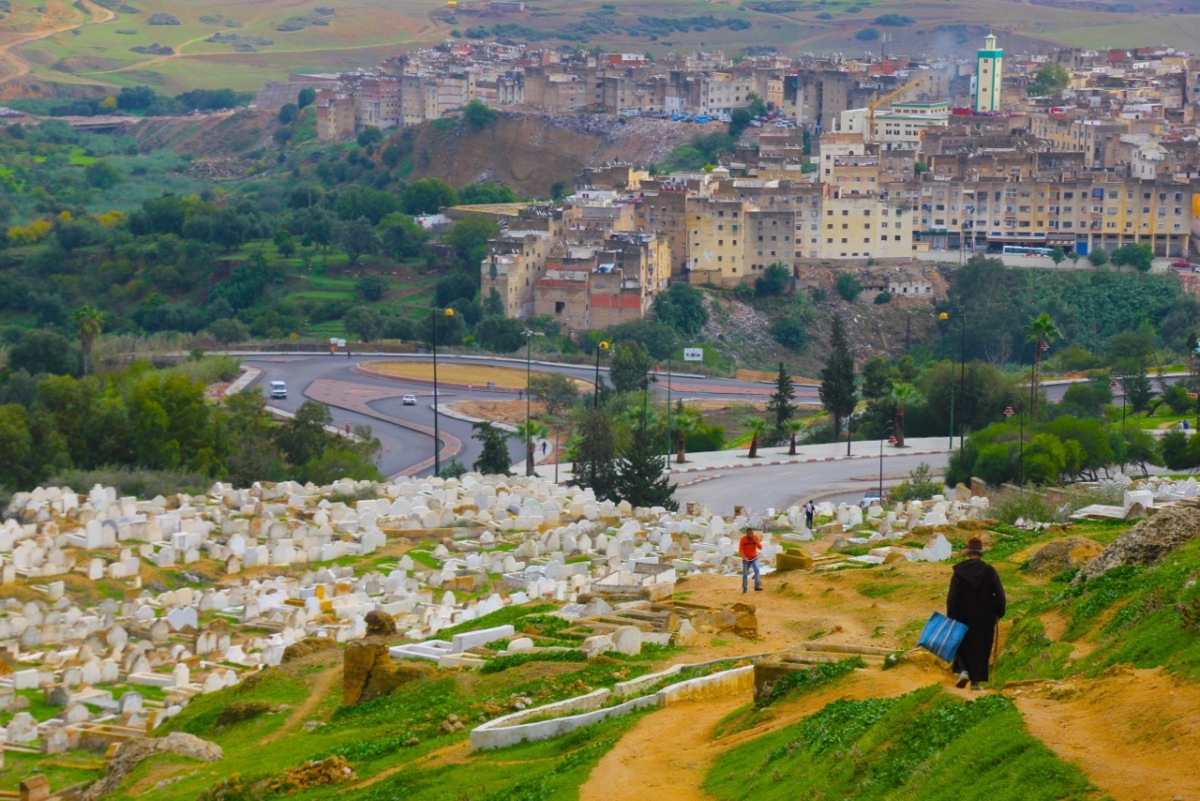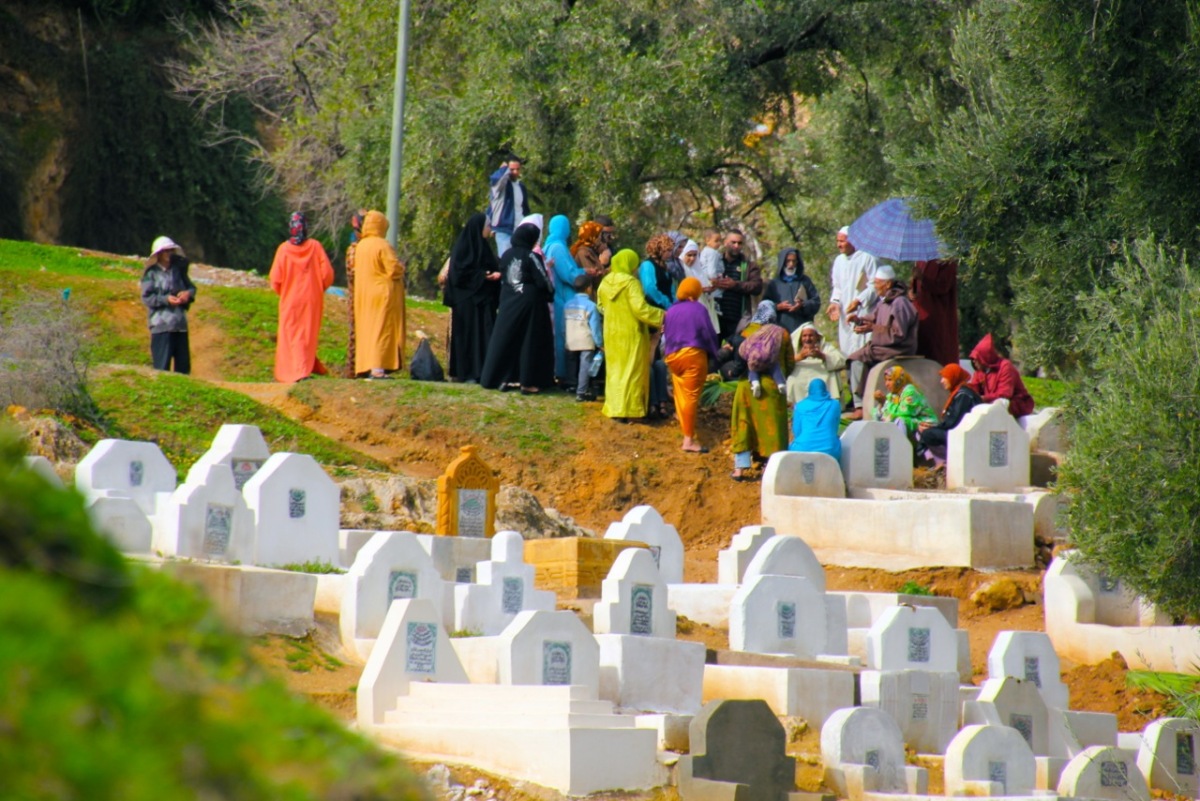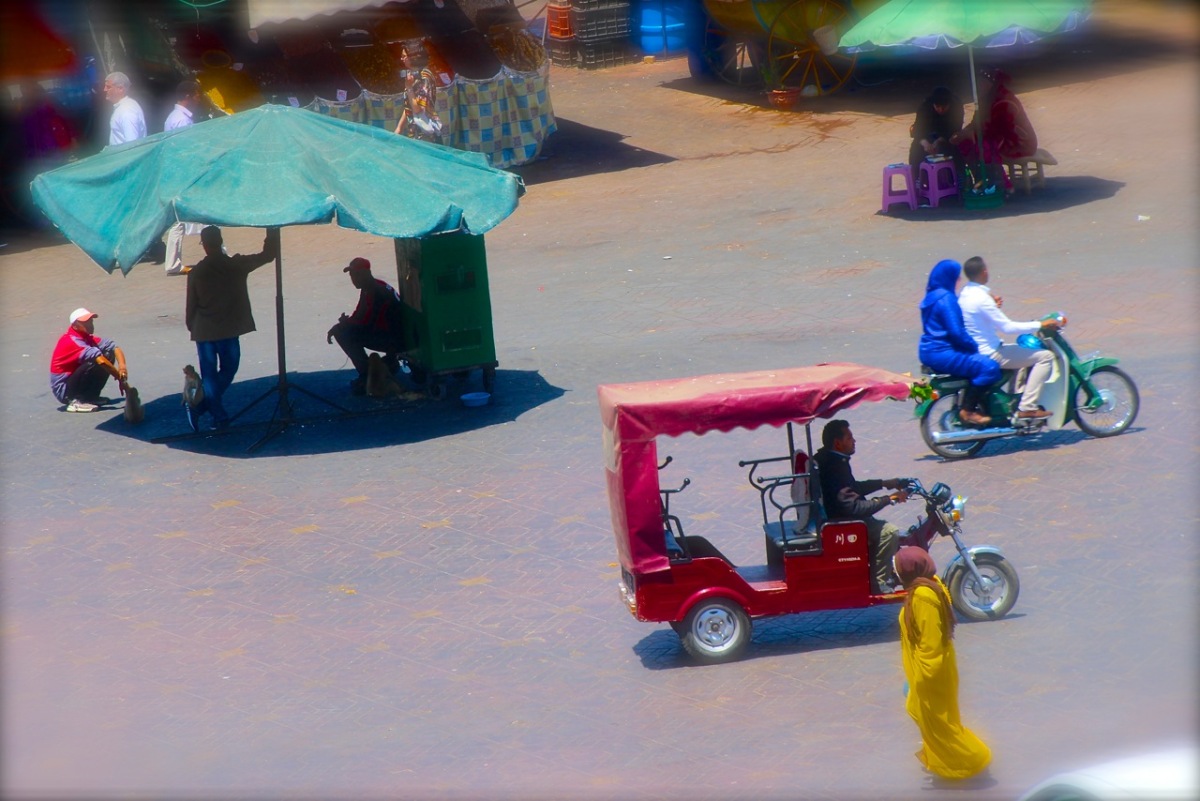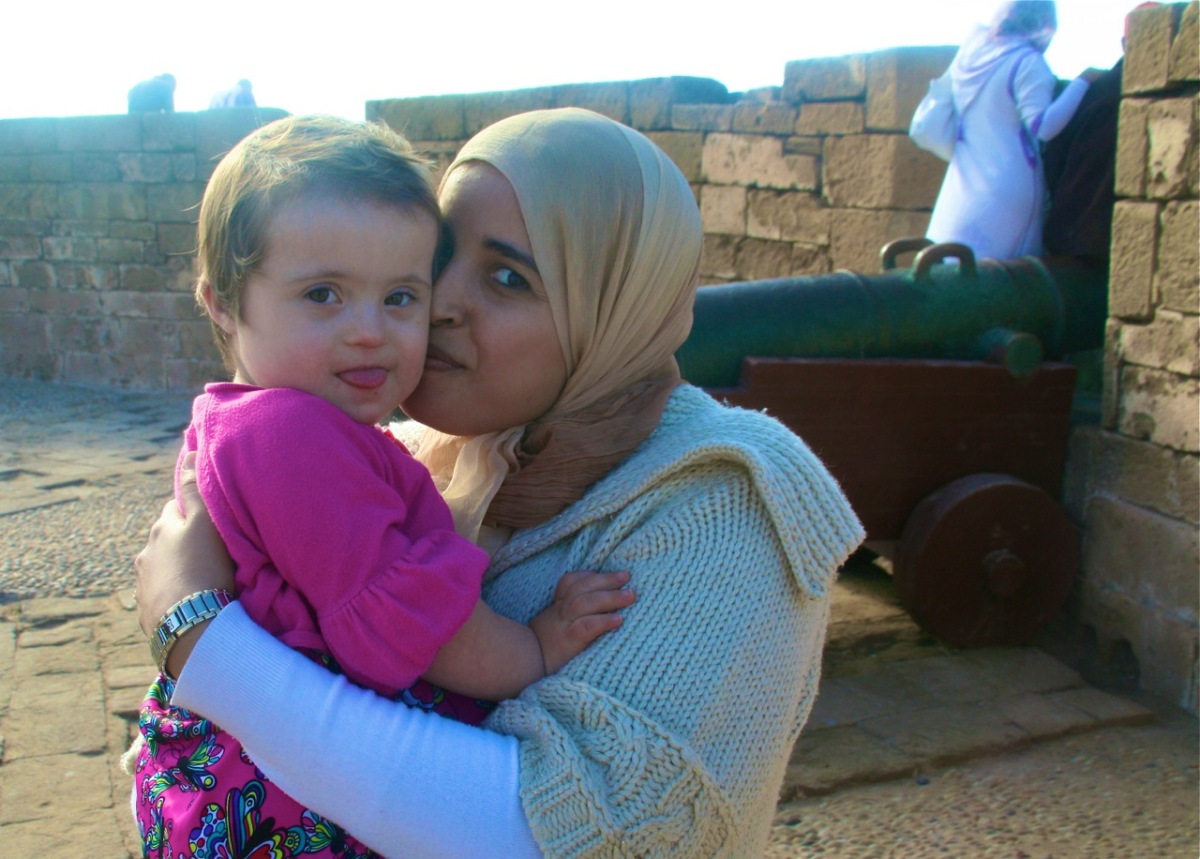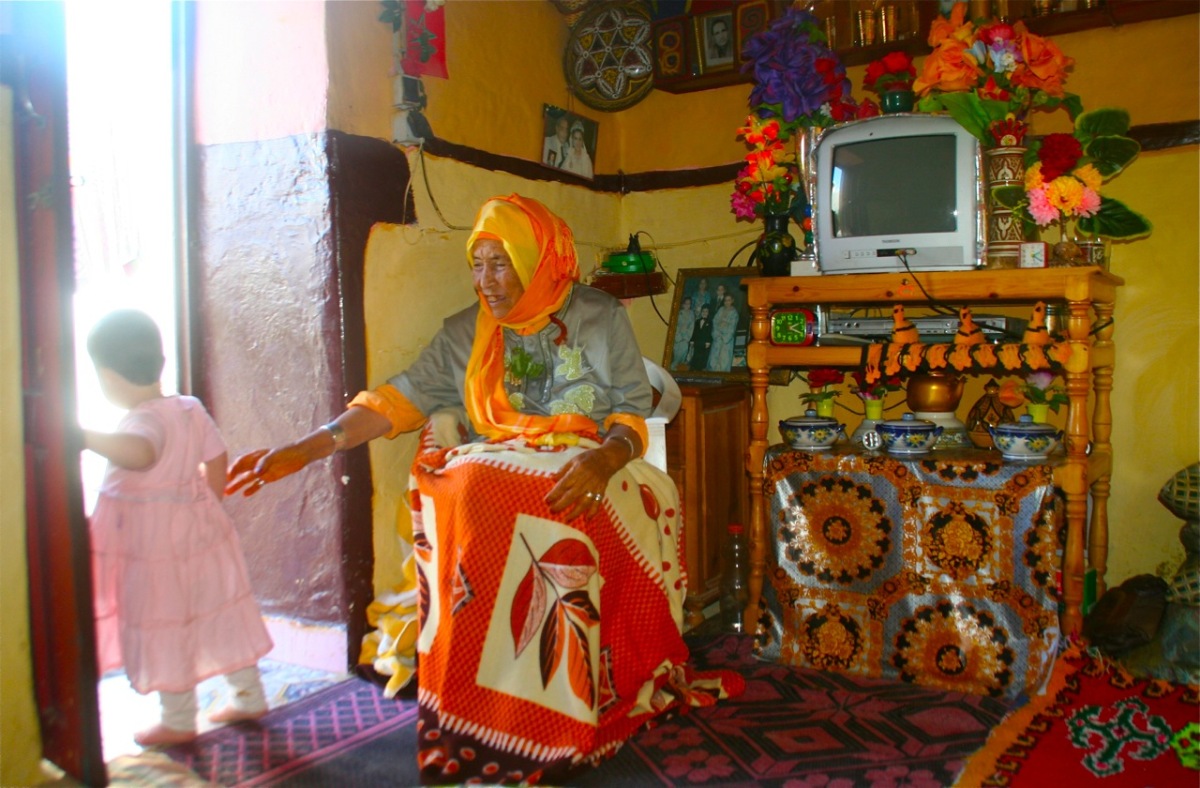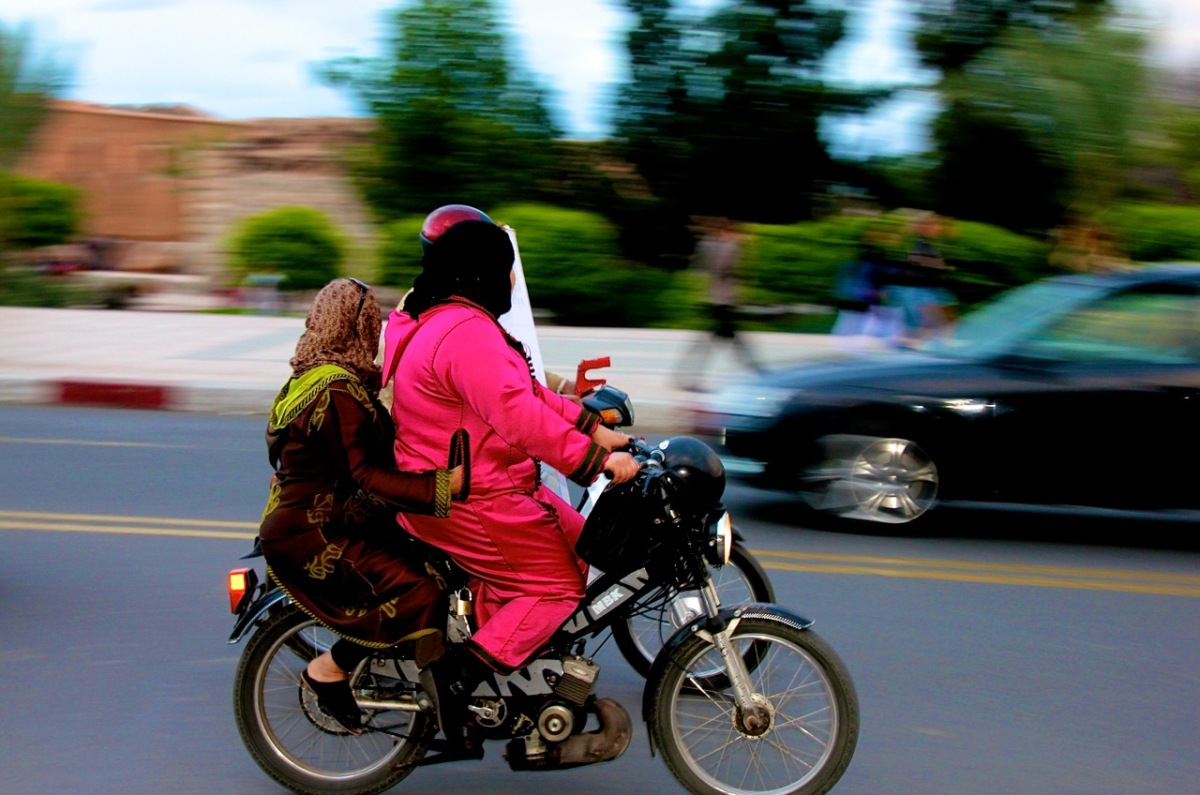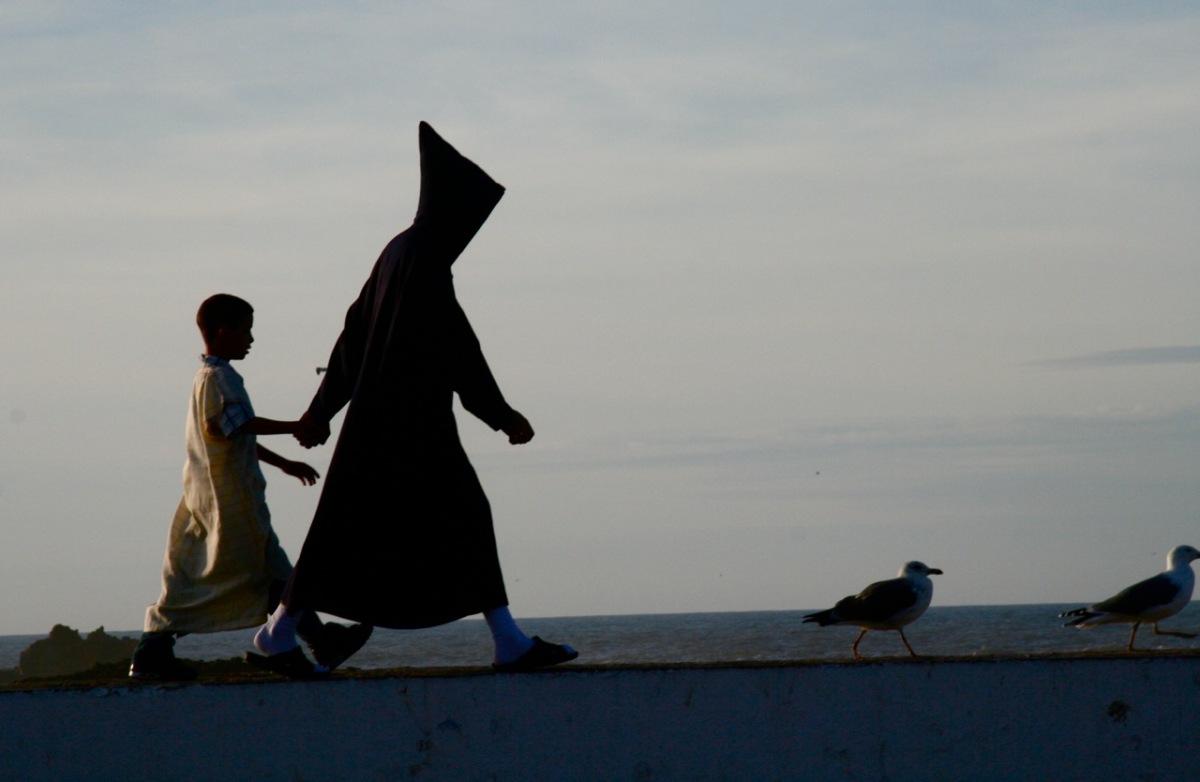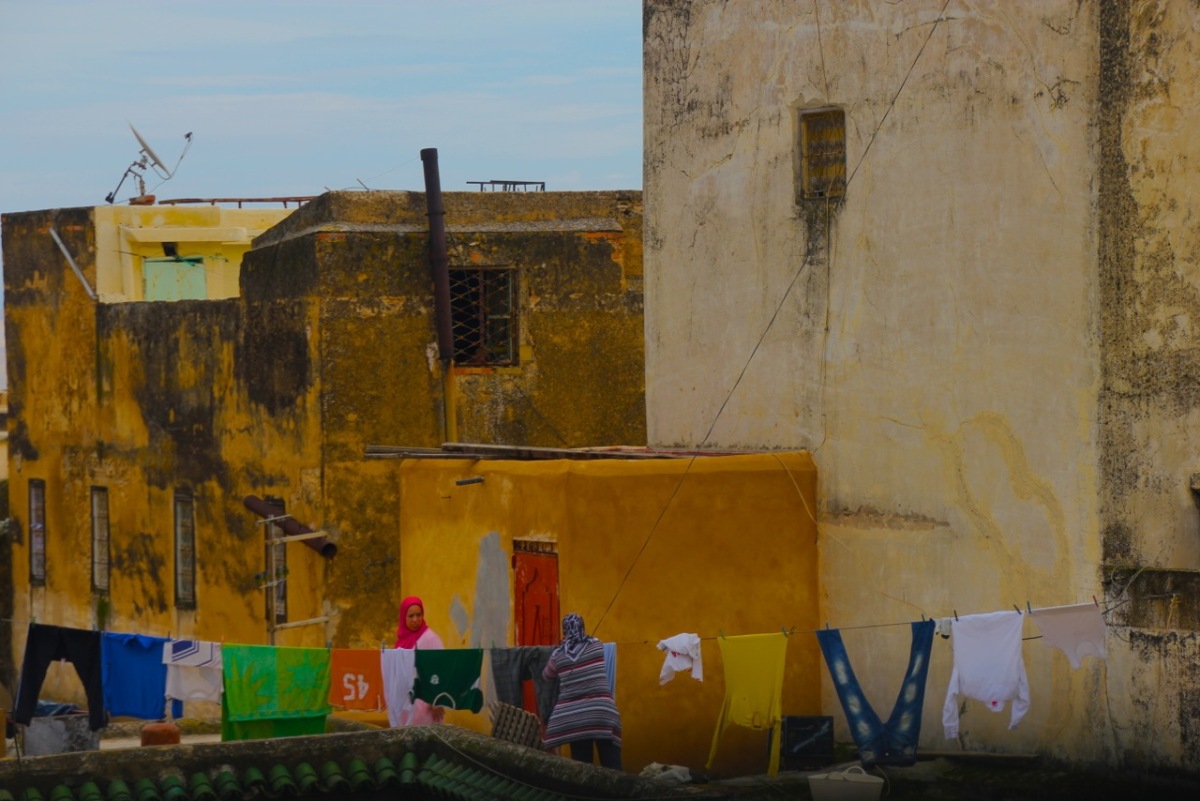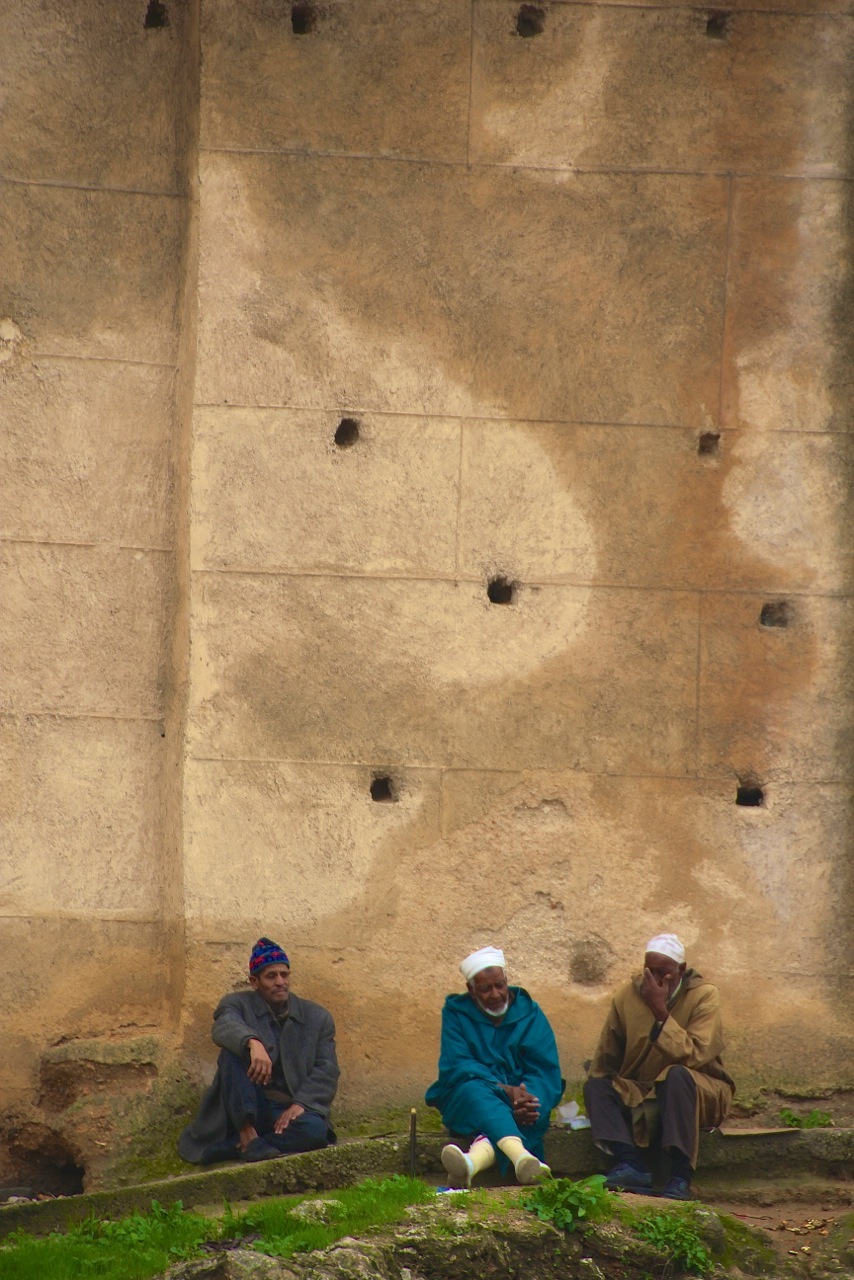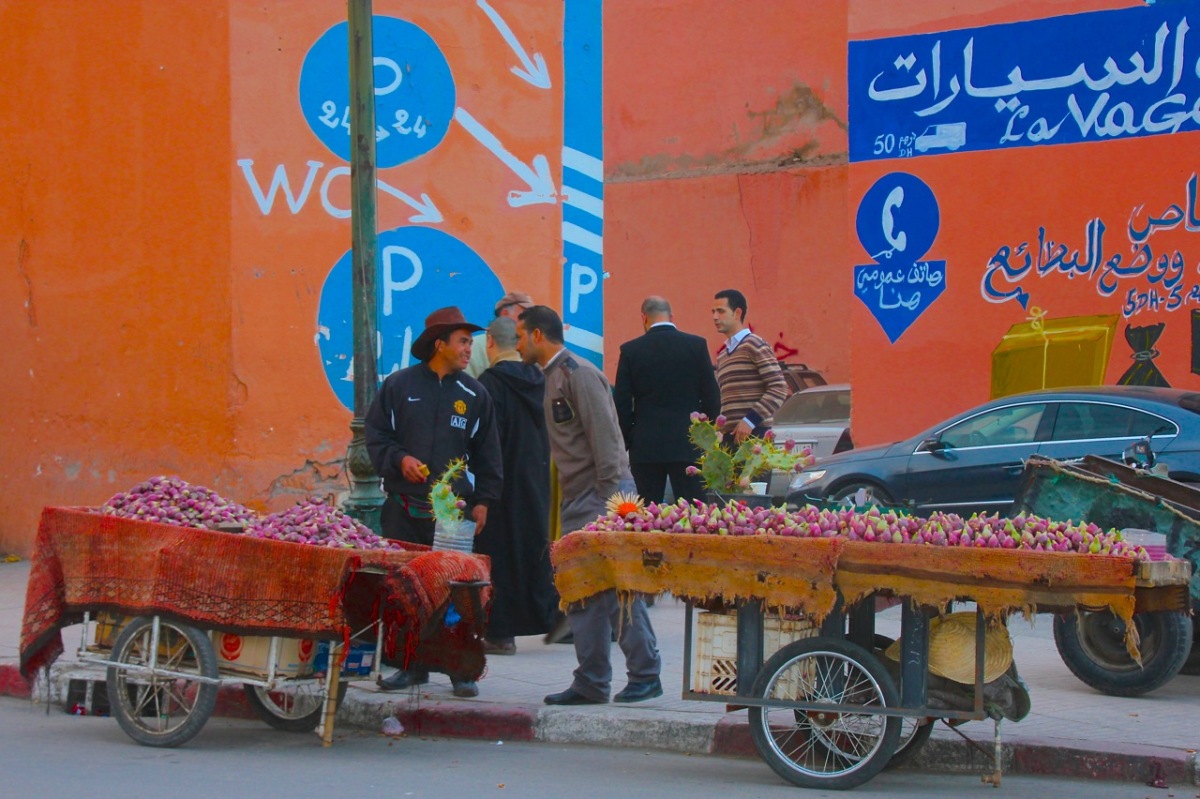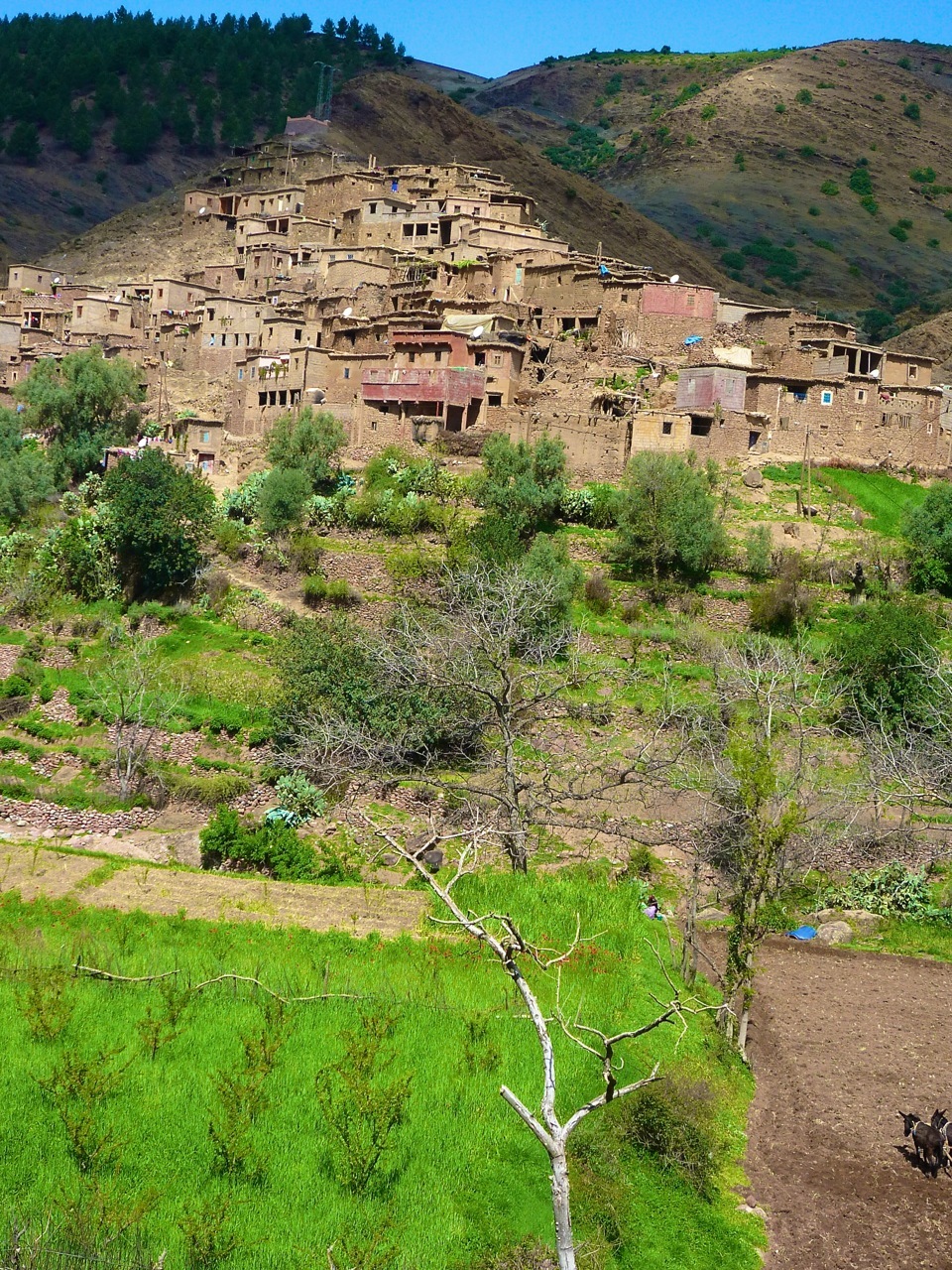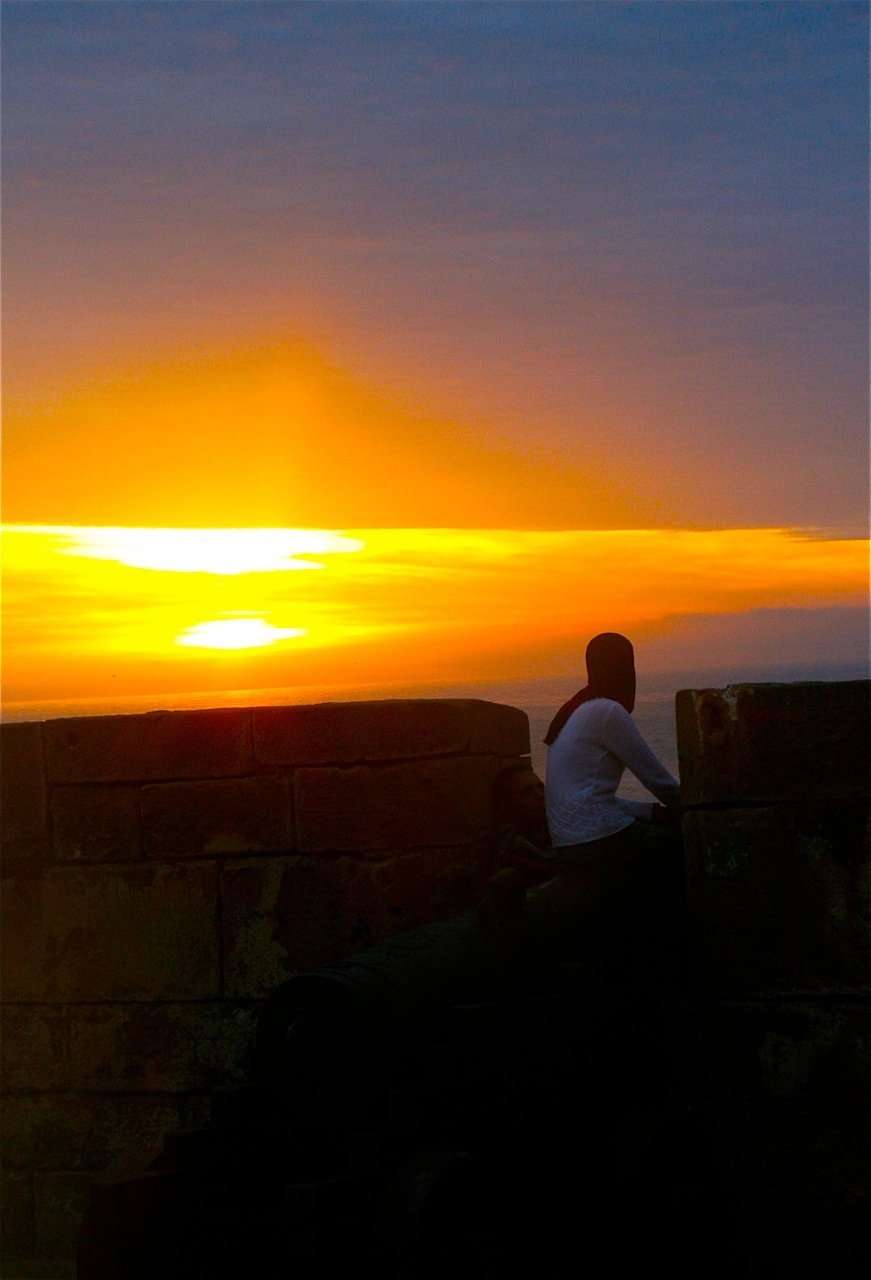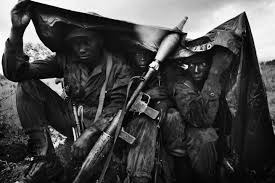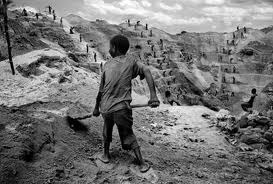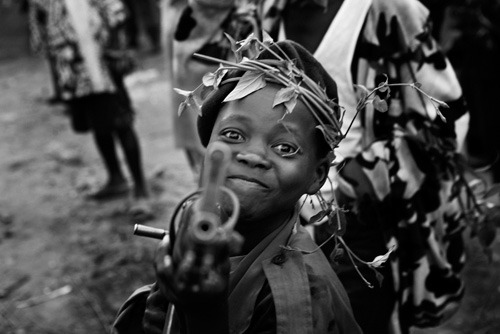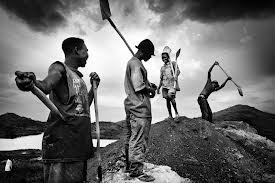It was the cemeteries that first spoke to me.
Anarchic white tombstones tumbling down the foothills, flanked on one side by the Atlas mountains and on the other by the ancient doors of the walled town, or medina, of Fes. “Don’t go that way,” the doorman at our hotel had warned us, “there are thieves.” But my daughter and I did not find thieves. What we found were children younger than her, four years sifting through sparsely strewn garbage. Traveling salesmen, burlap bags full of leather goods, weaving a path through the graves; women with brightly colored head scarves carrying water vessels to fill at a well amongst the dead.
We also found many freshly dug holes with funeral processions gathering around. They weren’t gloomy-looking flocks, these funeral processions; almost everybody, male or female, appeared to be wearing red or orange or blue or lime green djellabas (robes). Only the widow of the deceased regularly wears white, I’m told, as if she were a Western bride.
Love and death: kids and carcasses are all quite close in Morocco, a country of hit-and-miss medical care. Locals are so devoid of squeamishness, that they often don’t mind riding in the same little red taxi-seat as a slaughtered sheep being transported by its owner to the tannery downtown.
Morocco—far from the coastal resorts and the gated mansions of European celebrities and American millionaires--defies stereotypes, outstrips expectations, and bursts with color and vigor. Women, who I’d imagined might behave in more subdued a manner than in the overtly feminist European countries nearby, straddled mopeds on Marrakech’s Jemma-El-Fna Square wearing hot pink robes or—not infrequently--hot pink jeans, and blithely cut off the path of male commuters. When I accompanied a French-Moroccan friend to a local farm outside of Essaouira, I watched in surprise as four generations of women served us home-ground couscous, milked, fed and straddled the animals, mended the wall of the central riad house and gathered local rock for a new one.
There were eight of them, living there on their own. The men in their lives had died, been dispatched abroad, rejected, or simply rendered redundant. The only male in the room was a framed picture of the Moroccan king hanging behind a fifty-year-old television set. The great-grandmother of the household scooped up my daughter and kissed her smack dab on the mouth.
CRISTINA NEHRING
Cristina is an American author, journalist and photographer who lives in Paris with her now 5-year-old daughter, Eurydice, who has Down Syndrome, and often serves as her model. Her work has appeared in Condé Nast Traveler, The New York Times, The Atlantic Monthly, Harper’s, Slate, The Nation and elsewhere. Her books are A Vindication of Love: Reclaiming Romance for the Twenty-First Century (HarperCollins) and Journey to the Edge of the Light: A Tale Of Love, Leukemia and Transformation (Amazon Kindle Singles). Her photo exhibits include “The Sky is Falling” and “Found Love” (Chico, California).
To contact Cristina for photo purchases and other inquiries, connect with her on Facebook @Cristina Nehring or email at cristinanehring@gmail.com.
Photo Essay Curated by Nelida Mortensen

